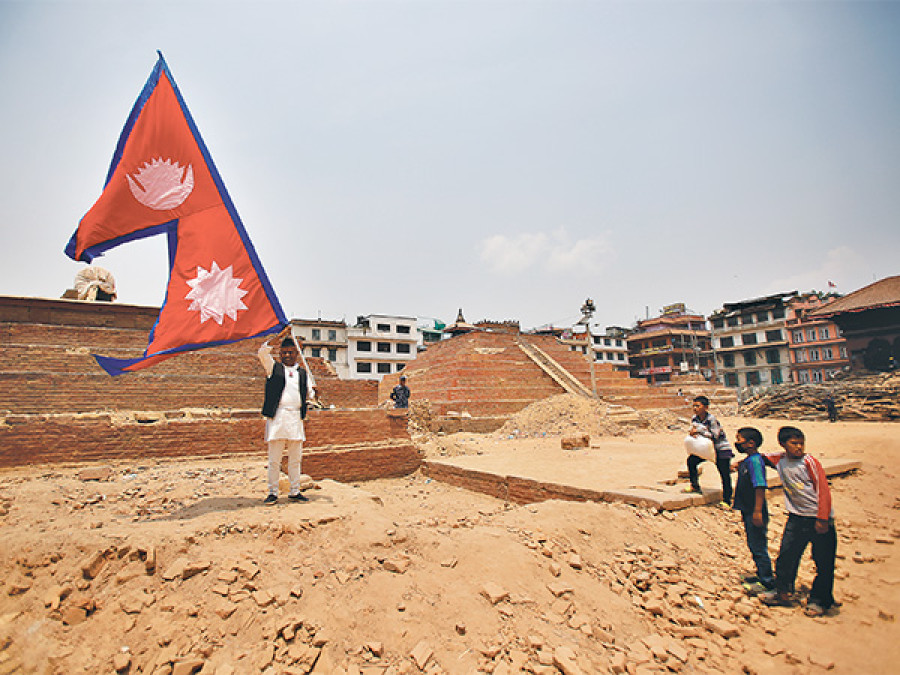Miscellaneous
Rebuilding our heritage sites
As we move slowly past the initial aftermath of two devastating earthquakes, even while a great many people in hard-hit
Sophia Pande
However, it is important to remember that there is a step in between: the medium term; often this phase is skipped over as people rush towards the permanent, not thinking through the pitfalls that are inevitable if building begins too hastily even while temporary living spaces are essential for those in desperate need.
Community groups came into prominence, in their extraordinary willingness and motivation to organise and provide relief to their fellow people, during the days immediately following the earthquake. The efforts of these groups are more than just commendable; they can be used to bring into focus the failure of the government in those crucial first hours to act with decision.
However, it is also important to understand that grassroots community movements such as these can only go so far when it comes to rebuilding. Most of the incredibly active members of these groups have fulltime jobs, and must return to them, but without government buy-in and support, long-term building is unsustainable; we cannot have disparate groups of people trying to rebuild a nation; that is the unique responsibility of the government, even as we begin to understand just how much support this institution will need from civil society activists, such as the ones who started these community-based aid groups, from the development sector, and of course, unfortunately, and inevitably, due to our own national poverty and endemic weaknesses, with the help of foreign aid.
And large entities such as the government are especially needed to undertake the task of rebuilding our heritage sites that have been hit by the quake. Thoughtful, measured research is a must before rebuilding the fallen temples and destroyed community spaces in affected areas in and around the durbar squares. Many monuments have fallen, the rubble requires careful sifting to retrieve that which is salvageable, and the artifacts need to be carefully inventoried. In the past, in the aftermath of the 1934 earthquake, for example, monuments have been fortified or restored, but very few have been built from the ground up.
In order to rebuild sustainably, both private, not-for-profit organisations such as the Kathmandu Valley Preservation Trust (KVPT), which has been on the ground since 1991, as well as the Department of Archaeology, need to assess and consult with structural engineers so that completely razed temples like the Hari Shankar temple in Patan, which was built in 1706, can be made around a new kind of model, where the foundations are stronger, even while retaining the configuration of our traditional architecture.
Within the deemed cultural heritage sites, this kind of rebuilding is no small task. Existing structures such as the Vishwanath Temple in Patan Durbar Square must be first be fortified (it leans dangerously at the moment), in addition to many other damaged edifices. When rebuilding does start, many artisans need to be trained in order to be able to supply the skills required to build these structures, which have traditionally, for centuries, been fashioned by woodcarvers and stone workers, the fundaments of which have been crafted by the brick workers, and finally, been adorned by the metalworkers. Where all these people will come from, and who will train them in these fine arts is a question that burdens the mind of many of the people involved in the rigorous research before the long-term rebuilding phase.
Finally, the conservation architects must also give some care to the UNESCO norms, which actually demand that sites must be preserved in the moment in which they were discovered—for the sake of art historical authenticity. This is why the Coliseum in Rome stands in half ruin, even while European architects know full well how to restore it to its former glory.
That model cannot be applied to Nepal and to the larger Indian subcontinent, though care must be given to retaining the outward architectural integrity of the monuments, because while ancient Rome is firmly in the past, a dead civilization, so to speak, our durbar squares house temples that are living monuments that contribute to an existing culture; there is no question here that they must not be left as they are, in their current state of ruin, for the sake of posterity or art for historical coherence. In fact, quite the opposite: they must be rebuilt to their former glory to withstand the tests of nature and time.
While civic efforts have made a noticeable difference, with communities deploying to search for and safeguard their precious durbar squares, we will need the support of our government, monetarily, as well as in terms of transparency when we start to rebuild; we cannot tolerate institutional dithering and bureaucratic red tape when it comes to reconstructing our living monuments.
Also essential, before we can start to plan for the long term, we will need the agreement of the Newar guthis, their priests, and the worshipping communities, who are wary of breaking the foundations of these sacred monuments. For now, at the threshold of this medium term, we must support and allow the people who are involved in and responsible for rebuilding to think through what really needs to happen, so that in the future, when the next big one comes, everything won’t come crashing down again.




 6.1°C Kathmandu
6.1°C Kathmandu










